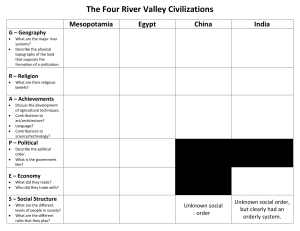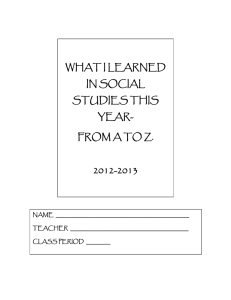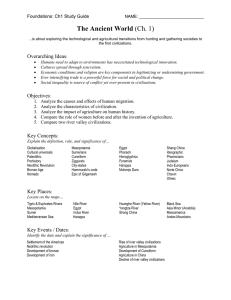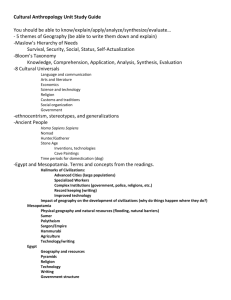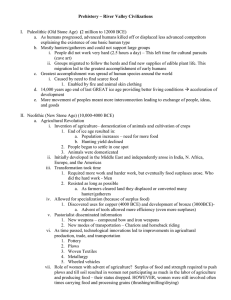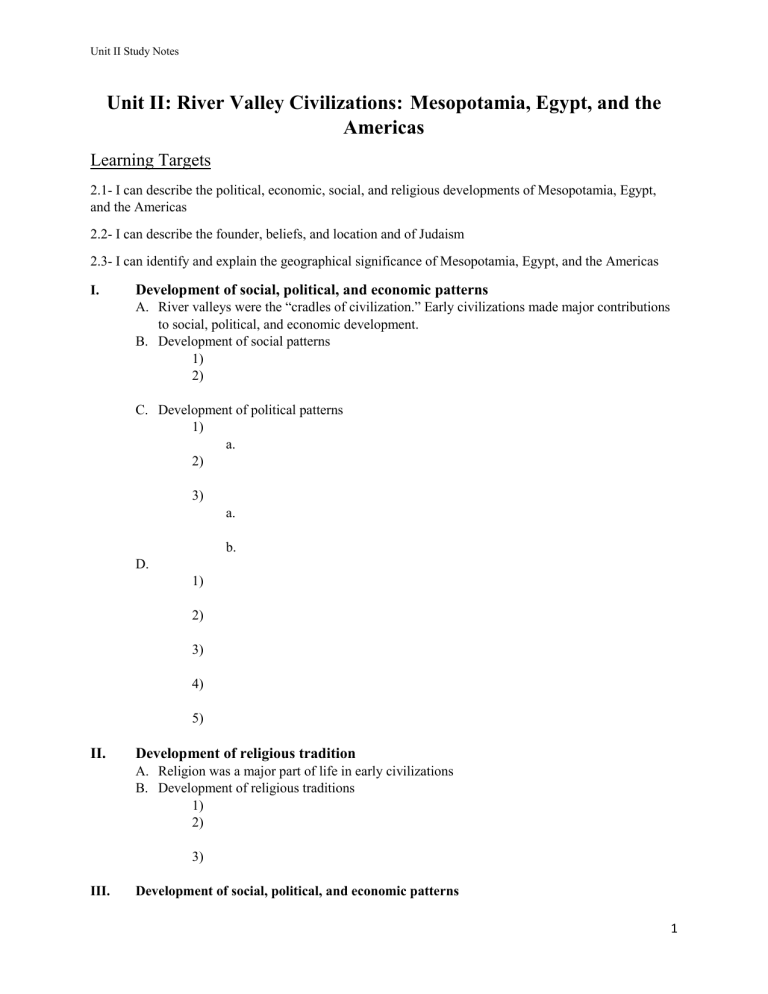
Unit II Study Notes Unit II: River Valley Civilizations: Mesopotamia, Egypt, and the Americas Learning Targets 2.1- I can describe the political, economic, social, and religious developments of Mesopotamia, Egypt, and the Americas 2.2- I can describe the founder, beliefs, and location and of Judaism 2.3- I can identify and explain the geographical significance of Mesopotamia, Egypt, and the Americas I. Development of social, political, and economic patterns A. River valleys were the “cradles of civilization.” Early civilizations made major contributions to social, political, and economic development. B. Development of social patterns 1) 2) C. Development of political patterns 1) a. 2) 3) a. b. D. 1) 2) 3) 4) 5) II. Development of religious tradition A. Religion was a major part of life in early civilizations B. Development of religious traditions 1) 2) 3) III. Development of social, political, and economic patterns 1 Unit II Study Notes A. Characteristics of Civilizations 1) Urbanization (Advanced Cities) 2) Specialized workers 3) Complex political and social institutions 4) Record keeping 5) Advanced technology 2.1/2.3 Learning Targets A. Mesopotamia 1. Geographic Location A. B. 2. Political Development A. 1. B. C. D. 1. 3. Social and Economic Development A. B. B. Egypt 1. Geographic Location A. 1. B. 2. Political Development A. 1. a. 2 Unit II Study Notes b. B. 3. Social and Economic Development A. B. C. Americas 1. Geographic Location A. Maya 1. 2. 3. B. Aztecs 1. 2. C. Inca 1. 2. A 2. Political/Religious Development A. Maya 1. 2. a. B. Aztecs 1. 2. 3. C. Inca 3 Unit II Study Notes 1. 2. 3. Economic Development A. D. Phoenicians 1. a. b. c. 2. 2.2 I can describe the founder, beliefs, and locations of Judaism A. Monotheism, attributed to Abraham, became the foundation of Judaism, Christianity, and Islam- religions that changed the world. The Hebrews were the first to become monotheists. B. Location 1) C. Beliefs, traditions, and customs of Judaism 1) 2) 3) 4) D. Beliefs, traditions, and customs of Judaism 1) 2) 3) 4) 4 Unit II Study Notes E. 1) 2) 5
